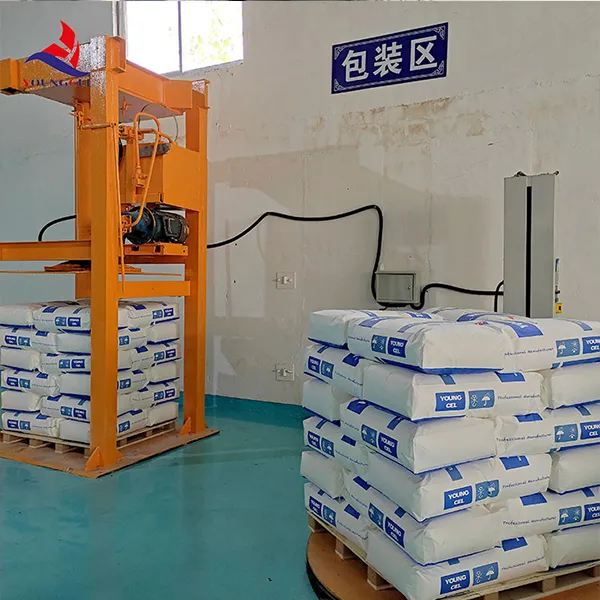Understanding RDP Adhesion An In-Depth Analysis
RDP adhesion, often referred to in the context of coatings, adhesives, and polymer products, is a critical topic within the field of material science. RDP stands for Redispersible Polymer Powder, which is a type of polymer that, when mixed with water, can revert to its original polymer emulsion. This unique property makes RDP highly valuable in various applications, primarily in construction and building materials.
The Fundamentals of RDP
RDPs are typically produced by spray-drying aqueous polymer dispersions. These powders can be used to enhance the properties of cementitious and gypsum-based products. When mixed with water, RDPs quickly redispersible to create a stable polymer film that enhances adhesion, flexibility, and durability. This capability is particularly advantageous in applications such as tile adhesives, exterior insulation and finish systems (EIFS), dry-mix mortars, and repair compounds.
The incorporation of RDP into construction materials significantly improves mechanical strength and workability. It also increases water resistance, thereby extending the lifespan of the products. Moreover, RDPs help maintain the integrity of the mixture during the drying process, ensuring even application without cracking or shrinking.
Adhesion Mechanisms
The adhesion properties of RDPs are attributed to several mechanisms. First, the polymer chains in RDPs can interlock with the substrates, creating a strong physical bond. Additionally, RDPs can form a film that occludes the pores in the substrate, allowing for enhanced mechanical interlocking. This is especially significant in porous materials like concrete and masonry, where traditional adhesives might struggle to form solid bonds.
Another crucial aspect of RDP adhesion is the chemical interaction between the polymer and the substrate. Functional groups present in the polymer can react with the surface of the materials, establishing a bond that enhances adhesion further. This chemical approach often leads to improved resistance against environmental factors, such as moisture and temperature fluctuations.
rdp adhes

Applications in Various Industries
RDP adhesion is prominently utilized in the construction industry. For instance, RDP-modified tile adhesives provide superior grip on substrates, ensuring durable and long-lasting bond strength. Similarly, RDPs in cement-based rendering allow for greater flexibility and resistance to cracking, which is vital for exterior finishes exposed to fluctuating weather conditions.
Moreover, the use of RDPs extends to the production of paints and coatings. By incorporating RDPs, manufacturers can create formulations that offer improved adhesion to various surfaces, including metals, plastics, and wood. The enhanced adhesion translates to better performance against peeling, blistering, and other forms of failure in coatings.
Environmental Considerations and Future Trends
As sustainability becomes a focal point in material science, the role of RDPs evolves. Many manufacturers are exploring bio-based RDPs derived from renewable resources, aiming to reduce the environmental footprint associated with traditional polymer production. Additionally, advancements in green chemistry are increasingly being integrated into the production of RDPs, making them safer for both users and the environment.
The future of RDP adhesion also aligns with technological advances in encapsulation techniques. This innovation allows the development of RDPs with tailored properties, enabling the formulation of customized adhesives and coatings for specific applications. Such advancements position RDPs as a versatile component in achieving high-performance materials in construction and beyond.
Conclusion
In summary, RDP adhesion stands as a pivotal element in modern material applications, particularly within the construction sector. Its unique properties not only enhance the performance of various materials but also align with the industry's shift towards sustainable practices. As research continues to unfold, RDPs promise to remain at the forefront of innovations aimed at meeting the demands of future construction and manufacturing. Their adaptability and effectiveness represent a significant leap forward in adhesive technology, which will undoubtedly shape the landscape of material science in the years to come.
-
Rdp Powder: Key Considerations for Wholesalers in the Building Materials IndustryNewsJul.08,2025
-
Key Considerations for Wholesalers: Navigating the World of Hpmc - Based ProductsNewsJul.08,2025
-
Hpmc Detergent: Key Considerations for WholesalersNewsJul.08,2025
-
Key Considerations for Wholesalers: China Hpmc For Tile Adhesive, Coating Additives, Concrete Additives, and MoreNewsJul.08,2025
-
Crucial Considerations for Wholesalers: Navigating the World of Construction MaterialsNewsJul.08,2025
-
Key Considerations for Wholesalers Sourcing Additive For Cement, Additive For Concrete, Additive For Putty from Additive Manufacturer Shijiazhuang Gaocheng District Yongfeng Cellulose Co., Ltd.NewsJul.08,2025




